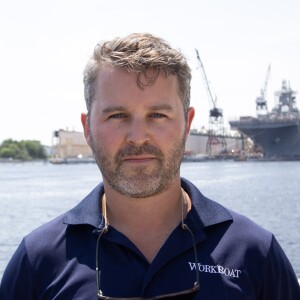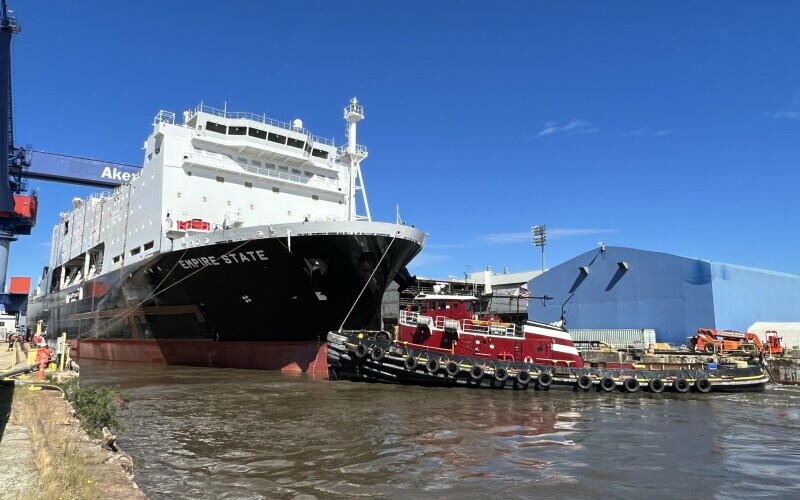Tote Services, the prime contractor for the Maritime Administration's National Security Multimission Vessel (NSMV) program, has brought a commercial mindset to the program. Tote's approach involves aligning government requirements with commercial shipyards, resulting in substantial efficiencies.
In a recent conversation with WorkBoat, Ben Christian, head of the NSMV program at Tote, shed light on the company's innovative vessel construction management (VCM) model, highlighting the benefits and challenges of overseeing the construction of these ships.
“The difference was that when the government looked at it, they figured in doing the government process, and looking at similar government programs, it's probably a $750-million-plus vessel. And the average cost under the job services as the VCM was $320 million per ship,” Christian told WorkBoat. “It's not necessarily apples to apples, because they would be different ships, right? We went and built a commercial vessel because that was the need. But the government could have overbuilt it to a government standard, to a MIL-SPEC (military specification) standard and spent a whole bunch more money that added no useful functionality as far as the end user is concerned.”
Christian discussed the challenges faced during construction of the first NSMV, the Empire State, at Philly Shipyard.
“Philly Shipyard is an excellent yard. But their experience is and has been cargo ships where you have a small accommodations block and a lot of steel and paint throughout the ship.” Christian said. In subsequent vessels, ongoing improvements in accommodation space construction efficiency have been observed.
“You can just rinse and repeat going forward. A lot of those things that are of a higher programmatic level, we were able to work through collaboratively between the shipyard and the government," he said. "By the time we delivered one, we were already incorporating lessons learned into the steel fabrication in the early stages of construction for number two. We’ve got two in the water, three and four in the in the dock and we’re about to cut steel on number five. So, you have to pretty quickly take the ideas and move them back into the system.”
Christian emphasized these NSMVs are sisterships, enabling them to be physically identical with interoperability for diverse operational scenarios.
SUNY Maritime College mariners have thus far cited the NSMV's outstanding performance, stability, and maneuverability. The vessel's modern equipment and enhanced training environment was also mentioned by the SUNY mariners. One ongoing adjustment included the need for faster internet connectivity. “If you think about having 1,000 people on board in a disaster scenario, that can suck up a lot of bandwidth,” he said.
The program also addresses the shortage of qualified officers for government and commercial-owned sealift ships. With state-of-the-art technology, crew comfort, and safety enhancements, these NSMVs provide a superior training platform, attracting new talent to the maritime industry. “What we've heard from the schools is that this is a fantastic recruiting tool. When they're doing campus tours and folks are showing up to SUNY Maritime College, they're seeing (the vessel) before they even get on campus because it's right there.”
Christian concluded the conversation with a broader vision for the VCM model, aiming to apply it beyond the NSMV program. TOTE Services envisions its model being adopted for noncombatant ships needed by the Department of Defense, the Army Corps of Engineers, and other auxiliary services, driving a more commercial approach to building the ships.
As the NSMVs set sail, they represent not just vessels, but a new way to approach government-sponsored shipbuilding programs.
“This is the key to this collaboration. We had a shipyard that was willing to collaborate and saw us as a benefit, not as a hindrance to what they wanted to do. And we had a government team that saw value in having a commercial entity, and were responsive, rather than saying, ‘Well, I could do all this myself, I don't need these guys’ and trying to go directly to the shipyard. The lane management between the organizations was really key.”




